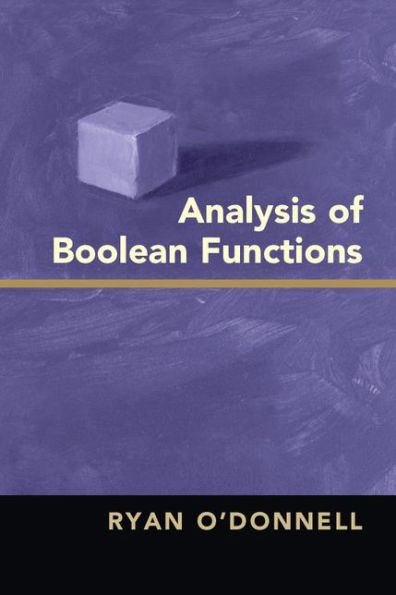Boolean functions are perhaps the most basic objects of study in theoretical computer science. They also arise in other areas of mathematics, including combinatorics, statistical physics, and mathematical social choice. The field of analysis of Boolean functions seeks to understand them via their Fourier transform and other analytic methods. This text gives a thorough overview of the field, beginning with the most basic definitions and proceeding to advanced topics such as hypercontractivity and isoperimetry. Each chapter includes a 'highlight application' such as Arrow's theorem from economics, the Goldreich–Levin algorithm from cryptography/learning theory, Håstad's NP-hardness of approximation results, and 'sharp threshold' theorems for random graph properties. The book includes roughly 450 exercises and can be used as the basis of a one-semester graduate course. It should appeal to advanced undergraduates, graduate students and researchers in computer science theory and related mathematical fields.
"1135303070"
Analysis of Boolean Functions
Boolean functions are perhaps the most basic objects of study in theoretical computer science. They also arise in other areas of mathematics, including combinatorics, statistical physics, and mathematical social choice. The field of analysis of Boolean functions seeks to understand them via their Fourier transform and other analytic methods. This text gives a thorough overview of the field, beginning with the most basic definitions and proceeding to advanced topics such as hypercontractivity and isoperimetry. Each chapter includes a 'highlight application' such as Arrow's theorem from economics, the Goldreich–Levin algorithm from cryptography/learning theory, Håstad's NP-hardness of approximation results, and 'sharp threshold' theorems for random graph properties. The book includes roughly 450 exercises and can be used as the basis of a one-semester graduate course. It should appeal to advanced undergraduates, graduate students and researchers in computer science theory and related mathematical fields.
67.49
In Stock
5
1

Analysis of Boolean Functions

Analysis of Boolean Functions
eBook
$67.49
$89.99
Save 25%
Current price is $67.49, Original price is $89.99. You Save 25%.
Related collections and offers
67.49
In Stock

Product Details
| ISBN-13: | 9781139949330 |
|---|---|
| Publisher: | Cambridge University Press |
| Publication date: | 06/05/2014 |
| Sold by: | Barnes & Noble |
| Format: | eBook |
| File size: | 44 MB |
| Note: | This product may take a few minutes to download. |
About the Author
From the B&N Reads Blog
